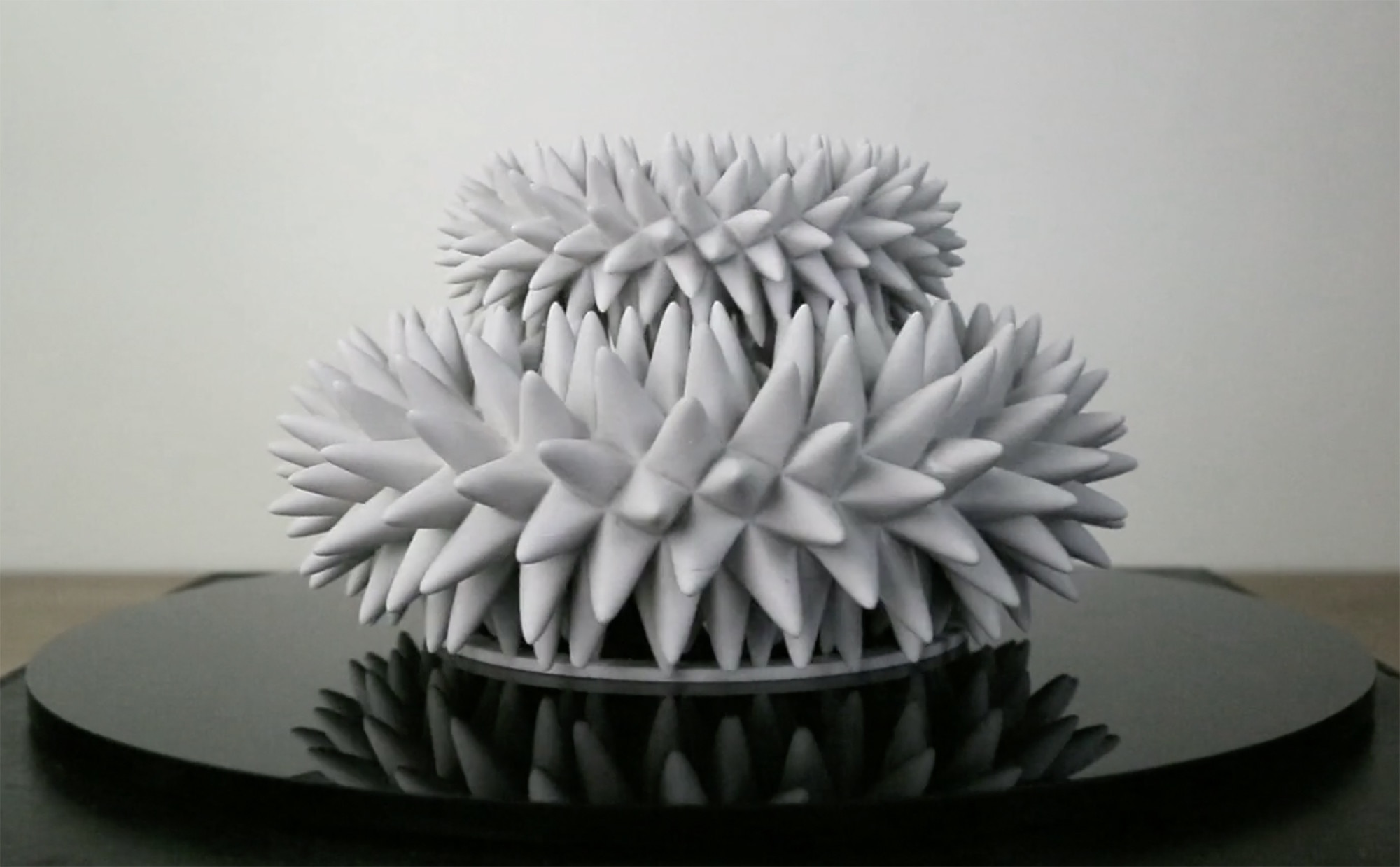Create a free profile to get unlimited access to exclusive videos, sweepstakes, and more!
Aliasing illusion makes 3D sculptures wiggle and gyrate

I'm not saying anything particular profound when I state that we live in an era where what you see on a screen may look incredibly real, yet be entirely fake. Special effects have come an incredibly long way in just a few years, so much so that, when we see something on video that's really weird or outside our experience, we assume it was computer-generated.
But that's not always the case! Sometimes you can take advantage of the ways camera work to create videos that are unearthly and even downright eerie.
For example, I've written about "rolling shutter," where the way a digital camera scans across a scene can severely distort the way things look in a video.
Another effect is called "aliasing," where something is moving in beat with the camera frame rate. The most common of these is when you watch a video of a car moving, and it looks like the wheels are spinning backward. They're not! It's just that the wheel spins almost all the way around in the time it takes the camera to take two frames of video, so in the second frame it looks like the wheel has turned backward a little bit. Do this many times in a row and you get that weird effect of the wheels looking like they're spinning the wrong way. I wrote about this extensively when a video taken by a camera that fell out of a plane went viral. You can also use it to make what looks like a magic spiral of water.
So you can get really weird effects by accident. However, artist John Edmark has used this effect on purpose and to his advantage, creating stunning and mesmerizing videos. He makes sculptures with cyclic patterns in them, then records them spinning (he also uses a strobe light with timed pulses to mimic camera aliasing). What you wind up with is very cool:
Like I said, eerie! Those arms are not actually wiggling or moving; you're seeing a different arm with every frame the camera takes. That fools your eye into thinking the sculpture is moving. It's amazing what can be done this way; he has a selection of other types of movement in this video:
I'll note he sells these sculptures — he calls them "blooms" — as well as other interesting objects. I think it would make a fun exhibit for a museum to show us how our eyes work, and how we can be tricked.
There's more going on here than just a trick of the eye, too. The Fibonacci series comes into play as well, and plants grow with patterns similar to these blooms. Watch this talk about Edmark's art and how these patterns all fit together. Trust me, your brain will feel quite thoroughly squeezed by the end!
I sometimes like to say that the rules of the Universe are science and physics, but the language they speak is math. It's an aphorism, to be sure, and a massive oversimplification. But when I see videos like these, the basic truth of it seems to shine through.














